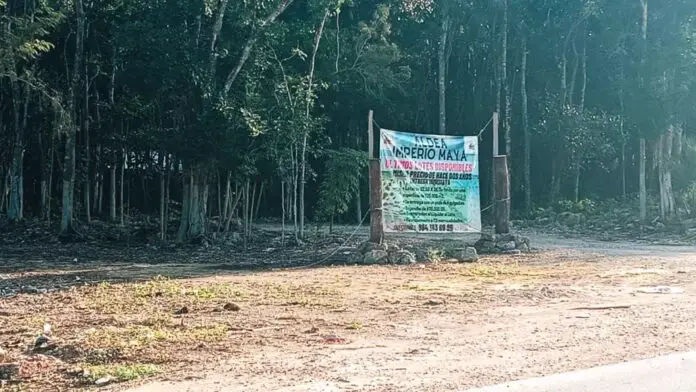Indigenous families in Playa del Carmen are still waiting for legal certainty regarding the land they live on in precarious conditions. Displaced by poverty and seeking a better future, many families of indigenous origin were hired to care for and develop tracts of land occupied by small rural landowners during the national land boom.
These families arrived with the promise that once the national land was titled, they would receive a legal piece of it. However, despite growing in numbers over time, they have not achieved legal certainty and have been abandoned by the authorities.
Many families migrated for the same reasons, attracted by the allure of the tourist destination. Upon the completion of construction projects for which they had come from different states (mainly Yucatán, Campeche, Tabasco, and Chiapas), some found refuge in ranch areas while others occupied national lands, creating irregular colonies.
Information from former holders of large tracts of national land reveals that due to the inability to regularize and pay for the title to Sedatu, these lands were abandoned, leading to massive invasions.
History of National Lands
The history of rural property in Solidaridad dates to long before the Municipality of Tulum was divided, approximately 30 years ago. During that time, the purchase and sale of national lands were booming until Sedatu established prices for titles that were beyond the reach of many possessors.
Consequently, many rural owners abandoned their lands, which were then invaded by migrants from different states of the Yucatán Peninsula and the Gulf of Mexico, who now require legal certainty in their possession.
Other areas that managed to promote ranches hired labor to fence, clear, care for cattle, and protect the area from invasions, promising a portion of the land once titled as national land in a future subdivision, which has not yet occurred.
According to an ejidatario, ranches promoted by ejidatarios also house families of ethnic origin from various states, mainly Yucatán and Campeche. He noted that six families live on his property, with school-age children traveling to school by bicycle or being taken by their parents on motorcycles.
On the main road crossing Avenida Juárez to Héroe de Nacozari, small communal ranches are inhabited by families mainly from Yucatán, working in the fields. Although there are few foreign families, such as the Chapines from Guatemala, they have been registered in some areas living seasonally.
“They come in search of a better life, escaping the violence at the Mexican border, but often return to their country or seek another employer offering better wages,” he explained.
New Invasions
José “N”, a former possessor of national lands, stated that the biggest problem for nationals with documents in the process of titling is the invasion of their lands. This is already occurring in areas cleared by the Mayan Train construction, focusing on areas with roads made by the federal highway.
In the Punta Maroma jungle area, invasions have been reported, raising concerns about whether the children living there have access to education, medical care, and social development programs.
Source: Por Esto




